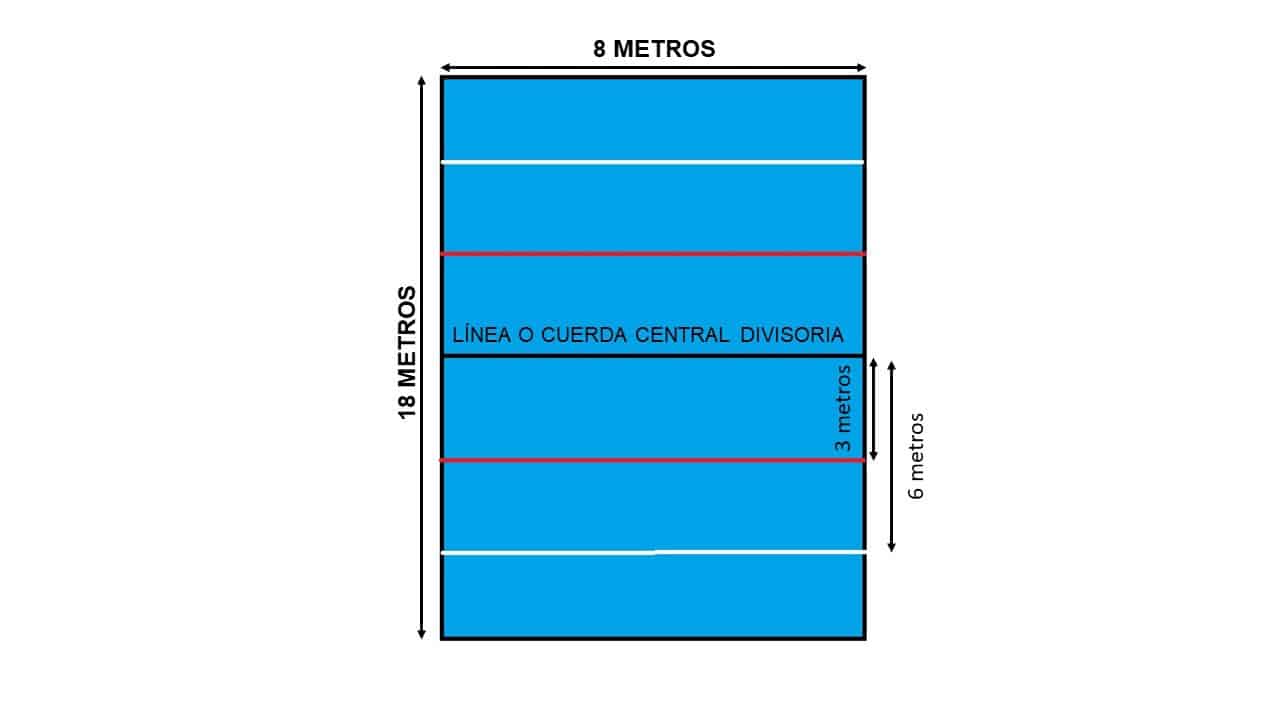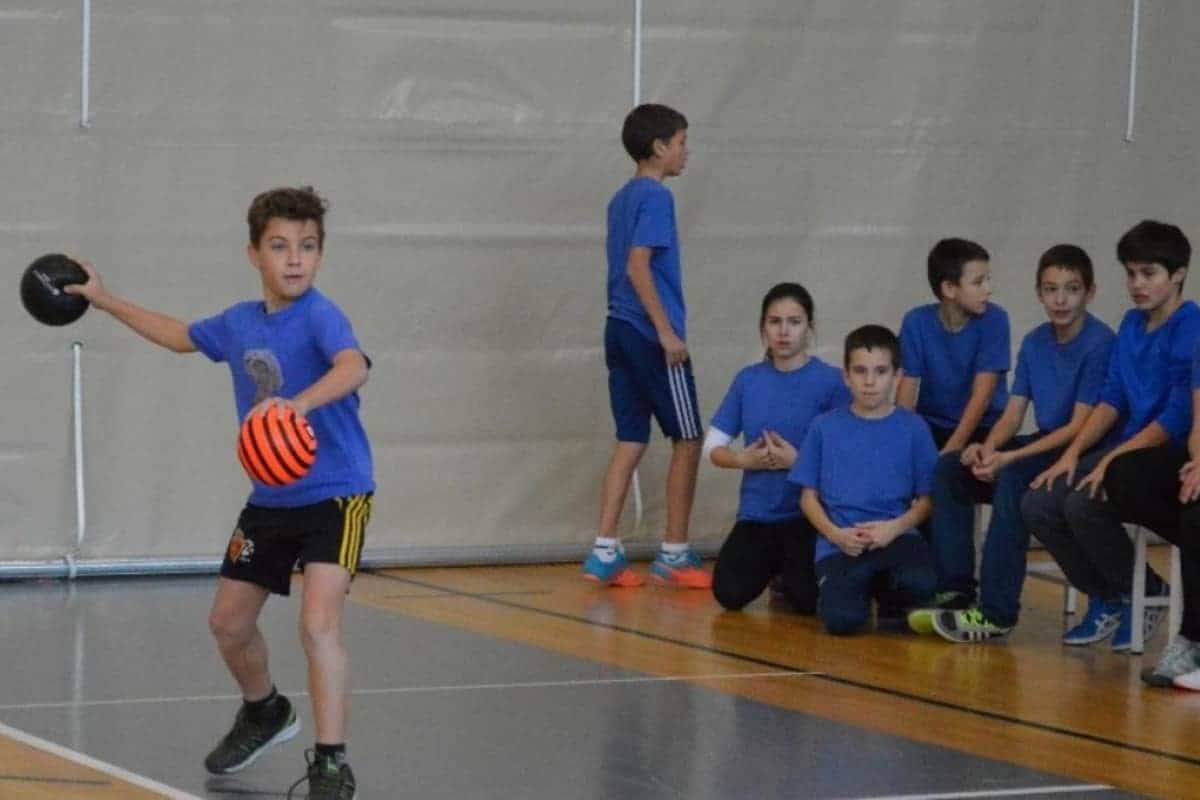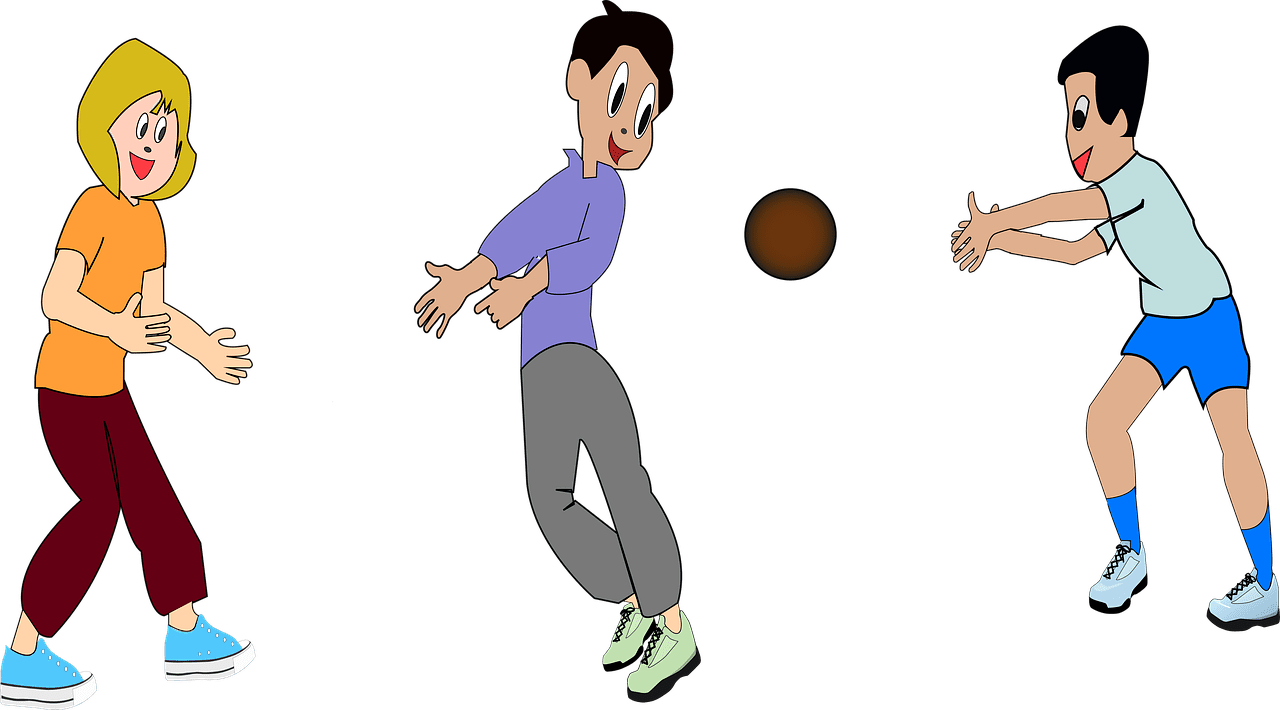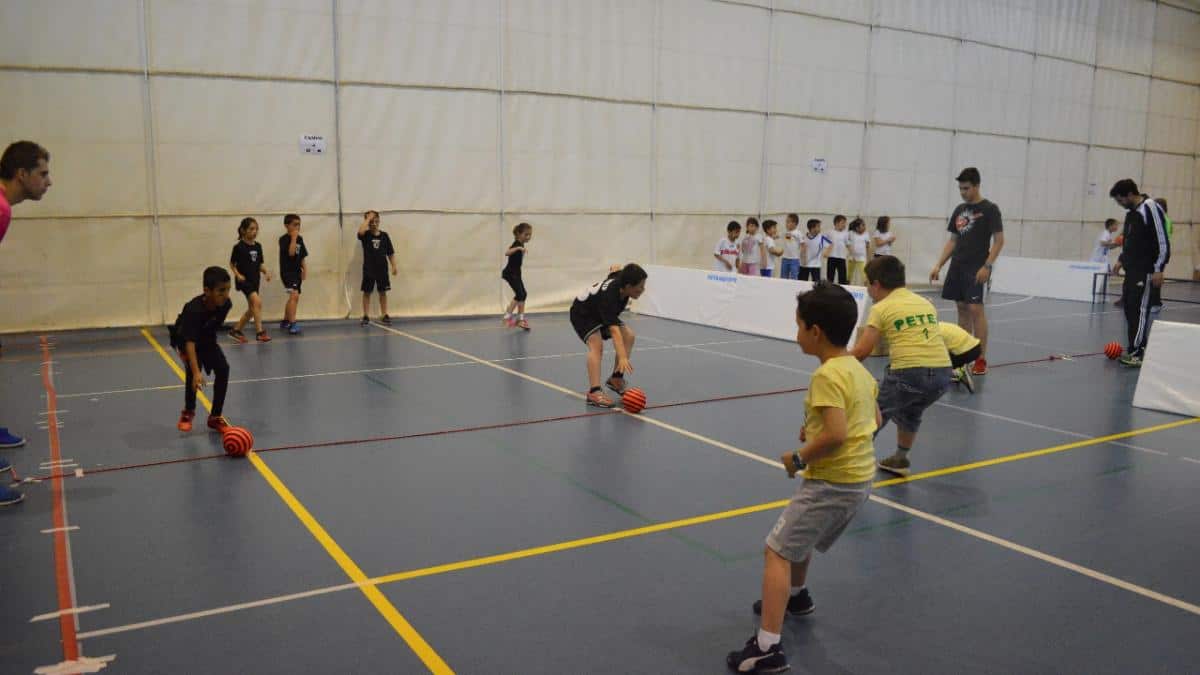In this article, the objective is to introduce the alternative sport “Datchball in Physical Education” for its implementation in Physical Education classes.
What is datchball in physical education?
Datchball is considered a divided court sport in which two teams compete in a clearly defined space divided by a rope or central line, with the objective of eliminating players from the opposing team by throwing and hitting the three game balls (1).
It is an adaptation of dodgeball, being a very dynamic and participatory sport that promotes values such as teamwork, integration, respect, and acceptance of defeat (2).
Origin of datchball in Physical Education
Datchball emerged in 2006 at the Brea de Aragón school by the Physical Education teacher Roberto Navarro, who, with his 5th-grade students, developed the first set of rules as an adaptation of Dodgeball from the United States (4).
As its creator indicates, initially, the goal was to create a warm-up game to activate students, but due to its great reception among students, it was proposed as a game to be played during recess and to create tournaments at an internal level. From there, this game grew and gained more and more followers until it achieved recognition as a sport by the Government of Aragón in 2016 due to its outstanding pedagogical work (3).
Recently, in 2019, the Aragonese Federation of Datchball was created, after many years of dedication and promotion by the creators of this sport (1).
What equipment is used in datchball?
It is played with foam balls, of which there are two types (1):
- Training ball: used for initiation and training, as it is softer than the official ball, facilitating grip and reducing fear of impact. It has a diameter of 16.5 cm. Its weight ranges between 111 and 113 grams.
- Official ball: used in competition and density training. Its weight is greater than the previous one, making throws more direct, with better grip, and facilitating the option of executing the air action. It has a diameter of 16.5 cm. Its weight ranges between 148 and 150 grams.
Therefore, three foam balls should be used, making the following combinations depending on the category (1):
- Pre-benjamin (1st and 2nd primary education) and benjamin (3rd and 4th primary education): 3 training balls
- Alevin (5th and 6th primary education): 2 training balls and 1 official ball
- Junior (from 1st ESO to 16 years): 1 training ball and 2 official balls.
- Absolute (over 16 years) and veteran (over 40 years): 3 official balls.
Datchball playing field
The playing field in Datchball is a rectangular space divided into two equal halves representing the field of each participating team.
Depending on the category, the measurements may vary. In the image, we see the official measurements for the junior, absolute, and veteran game categories.

An essential aspect to consider is the existence of the white line and red line in each half, whose objective is to progressively shorten the playing field so that the games do not extend excessively.
The white line is applied at 4 minutes into the game if it has not yet ended, and the red line at 8 minutes into the game (1).
It is very important that the referee indicates white line or red line at the moment when a team does not have all the balls, that is, one has 2 and the other 1, to avoid favoring one team over the other. Therefore, in many cases, the white line or red line is not determined exactly at 4 or 8 minutes, respectively.
Basic rules of datchball in Physical Education
As mentioned earlier, the objective of Datchball is to eliminate all players from the opposing team. They are eliminated by being hit with a ball.
The official Datchball rules can be found on its website. Below, for the initiation to this sport, some basic rules are highlighted (1, 3, 4):
- It is played with 3 foam balls that will be placed at the start on the rope or central line separating the two fields. The members of each team must touch the back wall of their field with any part of their body before the start of the game.
- At the call of “datchball,” the game will begin.
- A player will be eliminated when they are hit by a ball directly or indirectly (after a bounce) and then it touches the ground, wall, or ceiling.
- The same shot can eliminate several players at once, considering the criterion of touching the ground, wall, or ceiling for the eliminations to be effective.
- The players themselves must acknowledge that they have been hit by the ball; a referee is not needed to determine this. VERY IMPORTANT!
- Every eliminated player will sit on the side bench respecting the order in which they were eliminated, which will be the order in which they will be saved.
- The ball can serve as a protective shield. However, a ball deflected by the protective shield can eliminate you if it hits you afterward, hits a teammate or opponent, and then touches the ground, wall, or ceiling.
- A teammate will be saved when a ball is caught in the air (“air”).
- If you step on the line or rope that divides the two fields, you are eliminated.
- Balls can be stolen from the opposing field as long as you do not touch the opposing field with any part of your body.
- Another important rule to highlight is the “Kamikaze”. It occurs when a player jumps into the opposing field and shoots at a player from the other team; if their shot leaves their hand before touching the ground, this shot is valid. The player who performs it will die upon touching the opposing team’s ground, but their shot would be valid. It is the same action as the jump shot in handball, but in this case without stepping on the rope.
- There will be two referees per game, one for each team, and they must ensure that the rules are followed.
- It is mandatory to have fun and therefore congratulate the opposing team whether they have won or lost, for the effort made in both cases.
In the following video, you can get more information about Datchball
Practical application of datchball in Physical Education classes
The application of Datchball in Physical Education sessions is relatively simple. Below are some examples of activities for its implementation:
- Work in pairs on throws and catches. We can introduce different variants, such as hits with and without a prior bounce, hits at higher or lower speeds, and even throwing towards a goal as if it were handball.
- To work on precision, we can play games where the ball must be placed in a specific object, like a box, as well as trying to knock down a cone or have the ball bounce inside a hoop placed at a certain distance.
- Games involving large groups (10-12 people per team), such as capture the flag simulating that the balls are the “bullets” each team has to try to eliminate opponents, in the same way that if they catch it in the air they can save teammates.
- Another very interesting game is paintball, in this case, we can use any material to create trenches like Swedish benches, large and/or small mats, boxes, and any other element we consider appropriate and can serve as protection. In this case, at the start of the game, each team begins with a certain number of balls that they must use effectively to eliminate opponents. Paintball modes such as “last survivor”, “capture the flag”, “protect soldier Ryan,” among others, can be played.
- For tactical aspects, we can expand or reduce the field using both the white line rule, red line, and even, we can include another line if we consider it. It can be varied by establishing wider fields than long and vice versa, in the same way, by increasing or decreasing the number of balls in play.+
Conclusion
In conclusion, it can be said that Datchball is an alternative sport increasingly on the rise, very easy to implement, as it requires little equipment and is economical.
Regarding space, it is recommended to be in a gymnasium or room with walls, although there is also a modality contemplated within the rules for its practice outdoors, and there is even beach Datchball.
From my experience as a teacher, I consider it a sport that motivates and is very popular with students and even sparks interest in physical education among those who do not usually participate in this subject’s sessions.
Additionally, it is inclusive, coeducational, and an excellent sport for holding tournaments during recess at the school level, as well as in inter-school sports days.
Bibliography
- International Datchball Association. Datchball. Zaragoza, Spain. Retrieved on 02/24/2022.
- Jaquete, C., & Ramírez, E. (2021). Datchball and Colpbol as resources to promote interpersonal intelligence: Didactic experience applied with Secondary Education boys and girls. Challenges: new trends in physical education, sport, and recreation, (42), 470-477.
- Navarro, R. (2018). Datchball, an educational sport born in school. In Forum Aragón: digital magazine of FEAE-Aragón on educational organization and management (No. 25, pp. 44-48). Forum Europe of Education Administrations-Aragón.
- Marrón García, D. (2015). New motivating content in physical education: datchball. Three-way.




